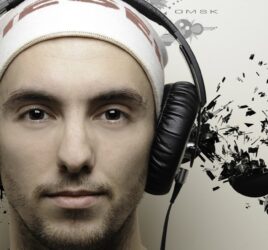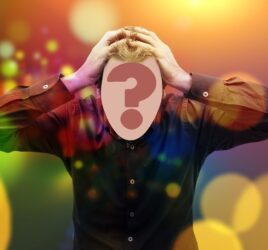
An awesome cure?
Second-year Psychology students participating in the University Honours College follow a workshop on Blogging Science, in which they learn to communicate science to the general public by means of informing, giving an opinion, and relating science to issues in society. A selection of these blog posts is published on Mindwise. Today’s post is by Jan Kaffenberger.
In recent years research has offered insight into the potency of psychedelic substances as a possible treatment for various mental disorders. Patients report altered states of consciousness and experiences of wholeness, transcendence, and considerable relief from their suffering afterwards. While the exact mechanisms remain unknown, psychedelics are one of the most promising options for treatment resistant mental disorders.
The cardinal feature of psychedelic substances is their capacity to evoke altered states of consciousness and hallucinations – reflected in the alternative terminology hallucinogens. But these substances can also affect one’s mood and thoughts. Commonly known psychedelics are LSD, Psilocybin, the chemical compound found in magic mushrooms, and MDMA, better known as Ecstasy. Nowadays psychedelics are primarily associated with drug culture and endless nights of partying. Research over the past two decades has steadily increased insight into the psychological effects and possible therapeutic applications of psychedelics. When considering the history of psychedelic research, these recent efforts might be viewed best as a renaissance. Early experimentation with LSD and psilocybin was aimed at assessing their potential to treat psychiatric disorders such as schizophrenia. These often controversial experiments were sometimes led by equally controversial figures such as the infamous Timothy Leary, who, after his dismissal from Harvard University, became a prominent figure of the counter culture of the 1970s. Due to increasing misuse for recreational purposes psychedelic substances were deemed illegal in both the US and Europe in the 1970s. In the realm of these measures, basic psychological research on the effects of psychedelics also came to a halt.
Then, in 2016, a paper published by Roland Griffiths and his colleagues indicated a significant relief from various adverse symptoms in life-threatening cancer patients after a five-week treatment plan including two high doses of psilocybin under medical assistance. In addition, patients also reported increases in quality of life, life meaning and a decreased fear of death. Six month after the treatment period, 80% of patients had sustained decreases in symptoms. These results are extraordinary in the context of treatment outcomes in this or similar groups (end-of-life situation).
So how do these drugs work?
Although each psychedelic substance has distinct mechanisms through which it exerts its effects, some shared characteristics can be established: (1) Psychedelics affect neurotransmitter levels in the brain, primarily the level of serotonin, which is involved in emotional processing and mood as well as a variety of psychological conditions like depressive disorders and anxiety disorders. (2) Psychedelic substances have been reliably associated with mystical experiences, which have been described as encounters with divinity, connectedness with the universe, and perceived vastness. Although mystical experiences are difficult to define, it is proposed that an important core feature is the experience of awe, an established psychological construct which comprises perceived vastness, existential awareness, profoundness, and ineffability. It should be noted, however, that experiences of awe are not exclusively induced by certain substances but can also be evoked by nature, art, and other forms of physical beauty. Furthermore, people vary in their capacity to experience awe. Recently, it was proposed that awe is the underlying mechanism of the substantial effects of psychedelics on psychopathology. The following excerpt is taken from a description of an awe experience that was induced by a high dose of psilocybin:
“… I was in the void. This void had a strange and indescribable quality to it in that there was nothing to it but this feeling of unconditional and undying Love…”
(Barrett & Griffiths, 2018)
Nevertheless, a recent review concluded that little is known about the exact mechanisms and possible integration into therapeutic practice. The substantial and impressing effects that have been yielded with psychedelics thereby merely mark the beginning of a promising new avenue in the treatment of psychological disorders. Nevertheless, the current state indicates that psychedelics truly might be a truly ‘awesome’ way of tackling mental health problems, especially those that are chronic and particularly resistant to other forms of treatment.
A concern that is raised by scholars is the trend of microdosing (taking low doses at regular intervals) LSD and psilocybin for enhancement of creativity, productivity, and mood. One can only hope that increased use for recreational purposes will not lead to setbacks with drug administration procedures, and, in the worst case, to a déjà vu of the major setback in the 1970s. Psychedelics are powerful substances that can offer relief from suffering through the experience of something profound, and that is the way they should be used in the future.
“If you get the message, hang up the phone. For psychedelic drugs are simply instruments, like microscopes, telescopes, and telephones. The biologist does not sit with eye permanently glued to the microscope, he goes away and works on what he has seen.”
~ Allan W. Watts
Links & References
Barrett, F. S., & Griffiths, R. R. (2018). Classic Hallucinogens and Mystical Experiences: Phenomenology and Neural Correlates. Brain Imaging in Behavioral Neuroscience, Curr Top B(36), 393–430. https://doi.org/10.1007/7854
Bonner, E. T., & Friedman, H. L. (2011). A Conceptual Clarification of the Experience of Awe: An Interpretative Phenomenological Analysis. Humanistic Psychologist, 39(3), 222–235. https://doi.org/10.1080/08873267.2011.593372
Griffiths, R. R., Johnson, M. W., Carducci, M. A., Umbricht, A., Richards, W. A., Richards, B. D., … Klinedinst, M. A. (2016). Psilocybin produces substantial and sustained decreases in depression and anxiety in patients with life-threatening cancer: A randomized double-blind trial. Journal of Psychopharmacology, 30(12), 1181–1197. https://doi.org/10.1177/0269881116675513
Hendricks, P. S. (2018). Awe: a putative mechanism underlying the effects of classic psychedelic-assisted psychotherapy. International Review of Psychiatry, 30(4), 331–342. https://doi.org/10.1080/09540261.2018.1474185
McGreal, S. A. (2015, Oct 30), Can the Experience of Awe Open the Mind? Psychology Today: https://www.psychologytoday.com/intl/blog/unique-everybody- else/201510/can-the-experience-awe-open-the-mind
Reiff, C. M., Richman, E. E., Nemeroff, C. B., Ph, D., & Carpenter, L. L. (2020). Psychedelics and Psychedelic-Assisted Psychotherapy. (May), 391–410. https://doi.org/10.1176/appi.ajp.2019.19010035
Marketa. License under Creative Commons.



